My obsession with Frank Salontay began quite innocently. I was actually shadowing his short-lived business partner and sometimes rival, hairdresser Robert Siegmann. At one time Siegmann lived in a mansion I began spying when I started the website—long-time article advancing along, thank you–but it was Mr. Salontay who led me on another merry chase altogether. Frank Salontay’s bright star roused my universe early on, if for no other reason than his surname dovetailed so fortuitously with his chosen occupation. Hairdresser. Salontay. Well, you get it. There is that hypothesis of nominative determinism, after all. Salon-tay carried that posh ring needed for an upscale beauty parlor. But there was something else intriguing about Frank Salontay–that fussy, little tastemaker of the Roaring Twenties. Salontay took up his shears at the evolution of women’s shorter hairstyles, a reaction to the long Victorian locks, which in Big-Small Town Omaha, positioned him both as a gifted, coveted stylist and a male authority. He shifted about Omaha salons, reimagining his hairdressing empire with an incessant frenzy, his well-coiffed colony of high society clientele following behind and I, in turn, feverishly tracked their every movement. Behind upturned collar, I was open-mouthed and agog. Late night with a pencil to my lips like I cigarette, I supposed Frank had an artistic temperament and could not be satisfied. That psychological state had always intrigued me, for these dynamic types tended to make things happen…or aggravate everyone around them. I set down my lengthy notes and visualized the hold-and-corner transgressions and backstairs discord, for one wasn’t chosen as hairdresser to the bulk of the Ak Sar Ben Queens without a bit of dissent. Yes, Frank Salontay had a persistent bee in his bonnet.
Trailing Mr. Salontay’s business ventures and movements, though just under twenty years, was an exciting, albeit, short tour of Old Omaha—arguably the bigger, better and more wonderful Omaha, where the characters and built environs were once so ambitious and vibrant. The photographic evidence accompanying my investigation was just the kind of thing I held up when people couldn’t fathom what was once a thriving downtown. Back then, Omaha was beginning to breathe a metropolitan air. An adept, style mavin, Frank Salontay cherry picked the hottest of hotspots or prophesied what would be the new It Location and seemingly guided his full staff and female swarm of admirers with each pronouncement. I never did figure that out exactly but he always gave the suspicion of being in the right place at the right time during Omaha’s heyday.

I created a dossier slipped into a valise, thrown in my backseat and did my best to keep an eye on sidestepping Frank Salontay.
The Big Gamble
From what I could uncover and make out, Mr. Frank Salontay was born in 1887 (also listed as 1889). He had entered birthplaces of Czechoslovakia, Hungary, Jugo-Slavia interchangeably on United States Censuses and other official documents. I’ve got to think that was due to the renaming and reconfiguring of this Slavonian region throughout Mr. Salontay’s lifetime. Czechoslovakia itself was formed at the end of World War I, subsequent to the fall of the Austro-Hungarian Empire. I would later find evidence that Frank completed the eighth grade in 1902, at the Vinkovce Public School in Vinkovce, Jugoslavia; this is a small town in what is now considered eastern Croatia. This clue hints that perhaps the 1889 birth date is more accurate. Even Salontay’s immigration dates vary slightly, 1914 and 1916; therefore I am not entirely sure where he first settled in the States. Likewise I could not hammer down his arrival to Omaha but I did find his son, little Frank Salontay, Jr., sometimes listed as “Francis,” was born on December 29, 1919 in town. To further add muddlement, the 1918 and 1920 Omaha city directories did not record the Salontay residence at all. What I can solidly submit is Frank Salontay’s 1920 United States Federal Census information and his first Nebraska hairdressing license, originally dated February 13, 1920.
Frank and his wife, Victoria, lived at 614 Martha Street by the 1920 Federal Census. At age 31, Frank Salontay was a licensed hairdresser and he worked at a local “department store.” He spoke English but his native tongue was listed as German. Later he would report in other official documents that he also spoke Hungarian. Victoria Salontay was 27, baby Salontay had just been born and Carl Kelling, aged 67, was a “lodger from Prussia.”
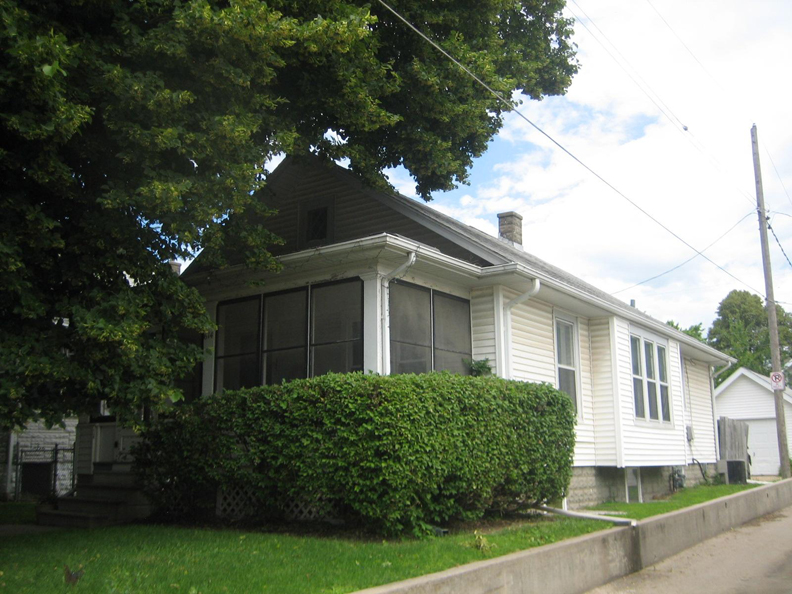
The early Salontay family home still stands! 614 Martha Street. Photograph borrowed from the Douglas County Assessor’s site. 614 Martha Street was built in 1917, on a very short run of Martha, off of 6th Street in Fixa’s Addition. Neighbors at the time of the census were all Germans and Bohemians.
I would learn through the Omaha World-Herald and the Omaha Daily Bee that in January of 1921, Frank Salontay opened an “Exclusive Ladies’ Hairdressing Parlor.” Salon De Beaute was positioned in the prestigious Hotel Fontenelle. “He had formerly worked at Burgess-Nash and Eldridge-Reynolds’ Beauty. Within two months, Mr. Robert Siegman (sic), formerly in charge of the Black and White Room at Burgess-Nash Co had taken partnership with Mr. Frank Salontay. Salon De Beaute is very popular, having a large patronage of the most exclusive of Omaha society. He was visiting New York parlors and on return was thought to bring back the latest styles in permanent wave, hairdress and hair ornament.” This was all very exciting and tied in nicely with the 1920 Census “department store” clue as well as our past investigation of the Burgess-Nash store.
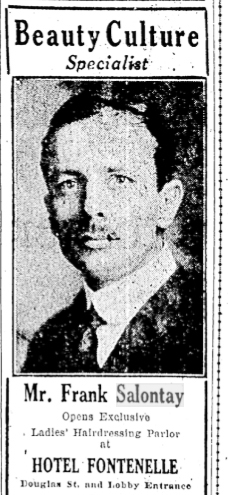
Photo from the OWH archives. Jan 1921. “Exclusive Ladies’ Hairdressing Parlor at Hotel Fontenelle, Douglas Street and Lobby Entrance.” In another story—Mrs. Mantell, wife of the celebrated Shakespearean actor, Robert B. Mantell, “while in Omaha last week visited the Salon De Beaute, Hotel Fontenelle, to have a permanent wave by the stream process. Mr. Frank Salontay, manager of the Salone De Beaute and skillful operator.”
Salon De Beaute and The Hotel Fontenelle
Situated on the northwest corner of 18th and Douglas streets, the Hotel Fontenelle offered between 330-400 (differing accounts) rooms, all with private baths. There were sample rooms, parlors, dining rooms, coffee shop, cocktail lounge, bar grill, barber shop, beauty shop, drug store with package liquor. By the 1940s it was “headquarters for the United Air Lines.”

1920 Hotel Fontenelle was part of the Interstate Hotel Company of Nebraska. H. E. Gregory was manager at the time. Douglas nw corner of 18th Street. Photo from the Omaha city directory. “A new hotel,” oddly labeled even though it was years old?
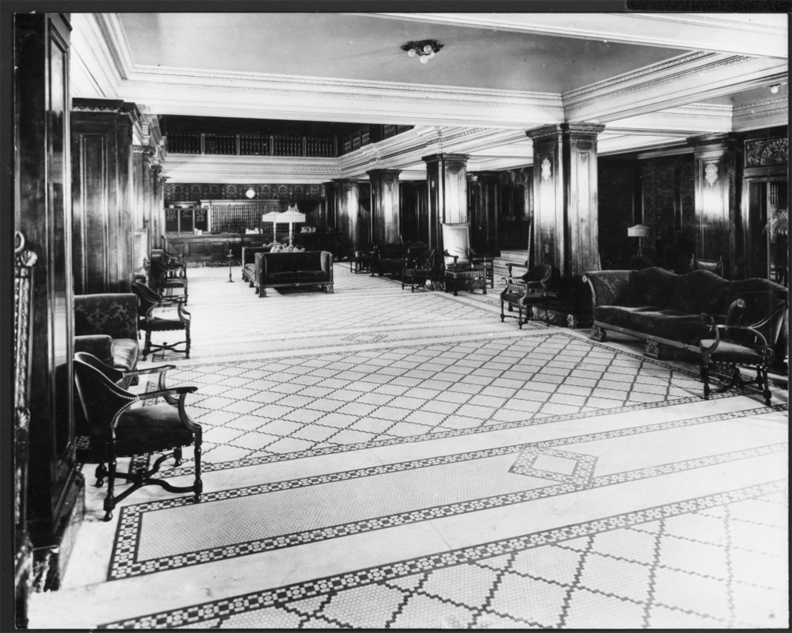
Fontenelle Hotel at 18th and Douglas Street. This is the lobby shortly after the hotel was built. Circa 1915. Creator: Bostwick, Louis (1868-1943) and Frohardt, Homer (1885-1972). Publisher: The Durham Museum. I want to click click across this sublime tilework, like a lovely expanse of gloriously weaved rugs. Then I might sit down, pull a cigarette holder from my purse and people watch.
In the years proceeding World War I, Omaha yearned to become a big city, this, according to Omaha: A Guide to the City and Environs compiled by the Federal Writers’ Project Works Progress Administration. “Tall buildings rose to give the city a distinctive skyline. The 19 story Woodmen of the World Building was for years, Nebraska’s most notable skyscraper.” I discovered the WOW structure was built in 1912. The Fontenelle Hotel, as well as the Masonic, World-Herald and the First National Bank buildings were all designed and constructed during this period. The Hotel Fontenelle was an impressive “16 story building erected in 1914 at a cost of $1,000,000.00. The exterior is of brown brick with the exception of the upper two stories and the lancet points projecting skyward which are of white terra cotta. Over the clerk’s desk in the lobby hangs William Andrew Mackay’s painting Logan Fontenelle. The criticism is made of the painting that the young chieftain, dressed in full Indian costume, seldom, if ever, was thus attired.”

An exterior view of “HOTEL FONTENELLE.” Cars are parked on the street next to the hotel. Northwest 18th and Douglas Streets. Creator: Bostwick, Louis (1868-1943) and Frohardt, Homer (1885-1972). Publisher: The Durham Museum. Date: 1915. I’ve written of the Fontenelle elsewhere in our investigations. This fine structure was demolished in 1983.
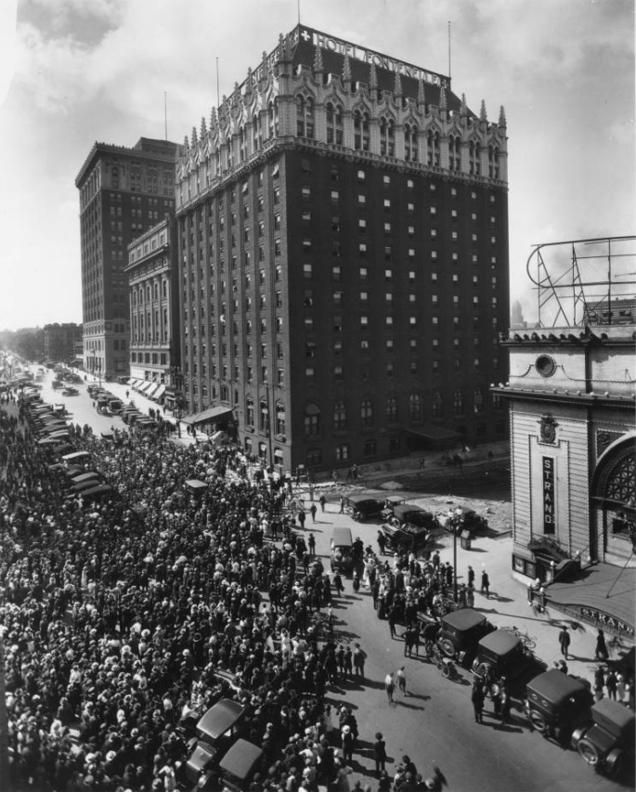
The Fontenelle at 18th and Douglas Street. At the bottom right is the old Strand Theater. A huge crowd watches as Daredevil Dick scales the building. Creator: Bostwick, Louis (1868-1943) and Frohardt, Homer (1885-1972). Publisher: The Durham Museum. Date: 1920. One can imagine from these images that Salontay and Siegmann’s selection of the Hotel Fontenelle positioned them to style and serve Omaha’s high society as well as any international traveler.
Much Ado About Hairdos
By the time I realized Frank Salontay had hung out his shingle at the prestigious Hotel Fontenelle in 1921, the fashionable women of this town had long heard rumor of the mythological European male hairdresser. In Europe, French male coiffeurs had long been dressing women’s hair and a Polish male hairdresser by the name of Antoine de Paris, often considered the first celebrity hairstylist, created the short bob cut in 1909. But up to that point in Omaha, male barbers worked specifically on men, and women on other women. More so than a female hairstylist or a ladies’ beauty parlor, regular women typically cut and styled their friends’ and family members’ hair at their homes or a personal maid might maintain and groom their wealthy employer’s locks.
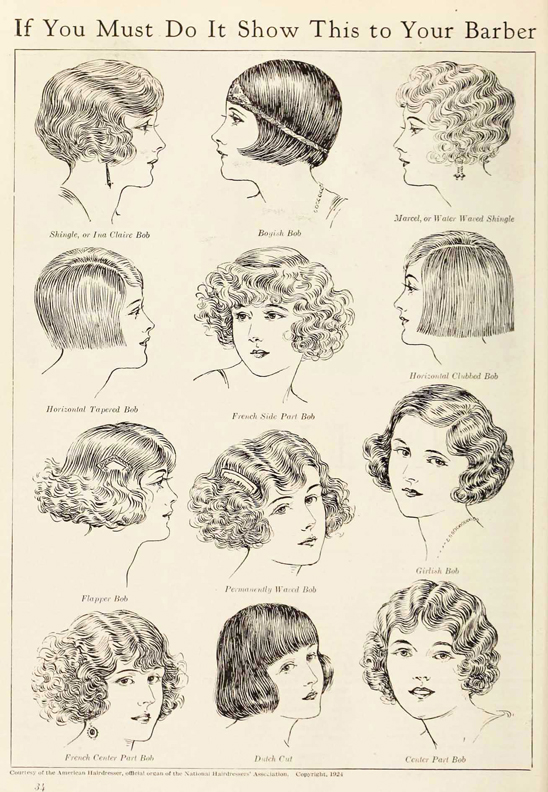
If you must! Great styles and great bob names like the Orchid, the Egyptian, the Eton Crop, Coconut and the Shingle.
American ballroom dancer, Irene Castle was thought to be one of the first women, stateside, to bob her hair in 1915. At this time and previous, long ringlet curls were arranged on the head, popularized by silent movie stars. The new decade of the Jazz Age brought cultural changes and with it, a shorter, rebellious hairstyle. Women began to bob one another’s hair and I’ve got to assume they found the actual cutting of the style more difficult than imagined (because I have tried to cut my own bangs). I was surprised to find some women looked to accommodating men’s barbershops. Barbers had to quickly learn these new bobbed styles. This brought to light that the women’s only salon industry took off in the 20s; many shops opened in the United States to meet the demand and for the first time, beauty parlors began advertising to lure women out of their homes. It was at that advantageous juncture that Frank Salontay entered Omaha, Stage Right.
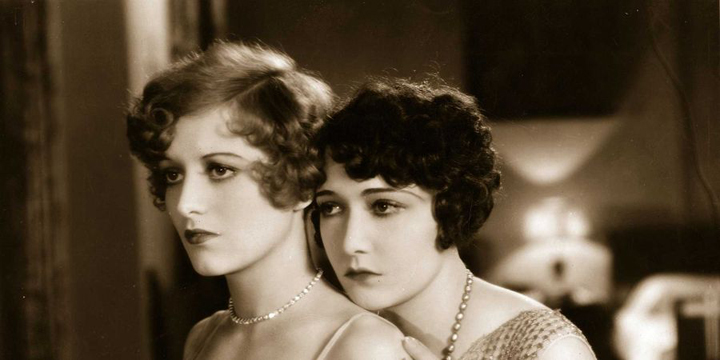
Actresses Joan Crawford and Dorothy Sebastian with their Marcel and Finger Waves.

Stage and film actress Aileen Pringle and her Pringle Shingle. Fantastic Mod look that would return in the 1960s and 1990s.

Dancer and singer Josephine Baker modeling in her glorious kiss or spit curls, a form of finger waving. Shiny and lacquered, I consider Baker’s hairstyle High Art. (Photo by Keystone-France/Gamma-Keystone via Getty Images)

Actress and dancer Louise Brooks wearing her straight bob with bangs. Patron Saint of quiet, dreamy goth girls of the 1980s. (Photo by Hulton Archive/Getty Images)
They say society on the whole and men, in particular, did not embrace the new bobbed hair early on. The fact that fashionable Frank Salontay could deliver such an up to the minute style, let alone embraced and encouraged women’s need for change at this crucial point, must have made him an attractive asset in the ol Rolodex. I know. I know. Not invented yet. As I stood in the shadows, I imagined that Frank spoke the language of women and easily jockeyed into the maestro role. Did I mention he bore a passing resemblance to a silent movie actor? Salontay had large, dark eyes, full lips and a fine boned, striking, artistic composition of a face, framed by coal black hair to include a small, well-kempt mustache. Well…it was becoming increasingly clear why he was soon to become so popular with the movers and shakers.
After the Dance
Just two years into their business venture, Frank Salontay and Robert Siegmann, Hairdressers, had decided to part ways. I cannot be sure why. The Omaha World-Herald announced in July of 1923: “Salon De Beaute, now located at Fontenelle Hotel, is now moving to Goldstein-Chapman Co, on second floor, at 16th and Farnam, to make its headquarters from now on. Mr. Frank Salontay is in charge and will devote his entire time in the new quarters, and will be glad to see his large clientele follow him.” What happened to Siegmann? Did the boys have a little tiff?
The Paxton Block and Goldstein-Chapman
Goldstein-Chapman was one of those classic Omaha department stores that used to make up downtown. William A. Paxton constructed the original Paxton Block building in 1887. Originally six stories high, “it was the finest office structure in the city at the time it was built.” I was interested to find it was constructed on the site of the original Courthouse. In 1922 Goldstein-Chapman announced they were moving into the Paxton Block and intended to complete a new façade with entrance on the 16th Street side.
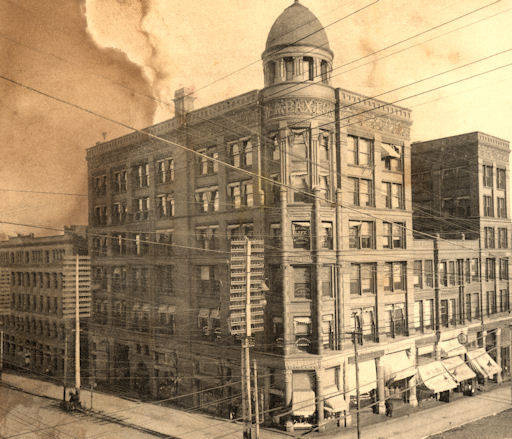
Photograph of the Paxton Block, northeast corner of 16th and Farnam Streets. Includes Home Investment Company (insurance company); Max Meyer & Bro. (Jewelry store); National Life Insurance Co. Creator: Heyn, George. Contributors: Barnhardt, Jackie. Publisher: Omaha Public Library. Date: 1890-1899.
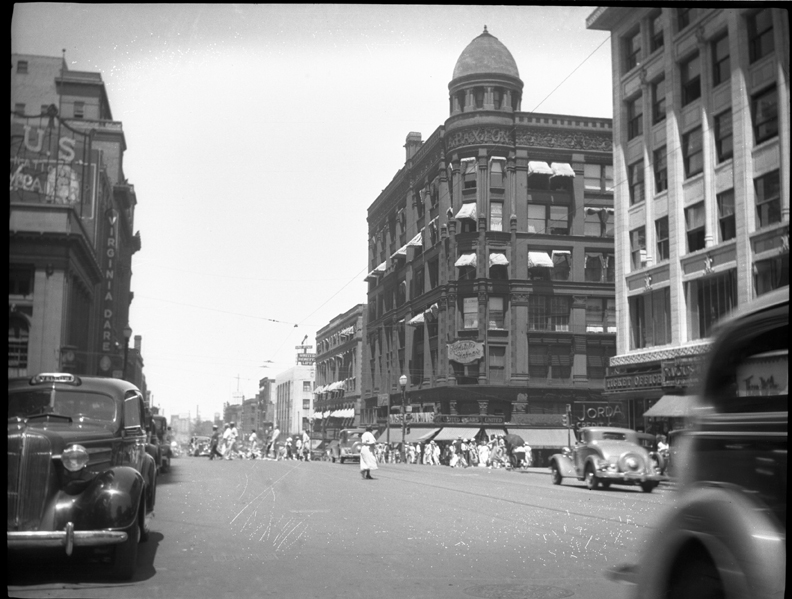
Looking at the northeast corner of 16th & Farnam Street from south 16th Street. The old Paxton Block houses the Goldstein-Chapman Store. If you squint you can see an early logo on the department store sign hanging above. Other businesses were the Paxton Music Company, Candyland, Feltman & Curme Shoes, Harry Mason-the Tailor and Paxton Billiards.Creator: Bostwick, Louis (1868-1943) and Frohardt, Homer (1885-1972). Publisher: The Durham Museum. Date: 1935. When Frank Salontay transitioned his business to Goldstein-Chapman’s second floor, the department store looked as it does in this photo.
I delighted in the discovery that the top three stories of the Paxton Block building were later removed in 1940. Now Frank Salontay had long ago moved on from Goldstein-Chapman by then, but I include this because it is fun.
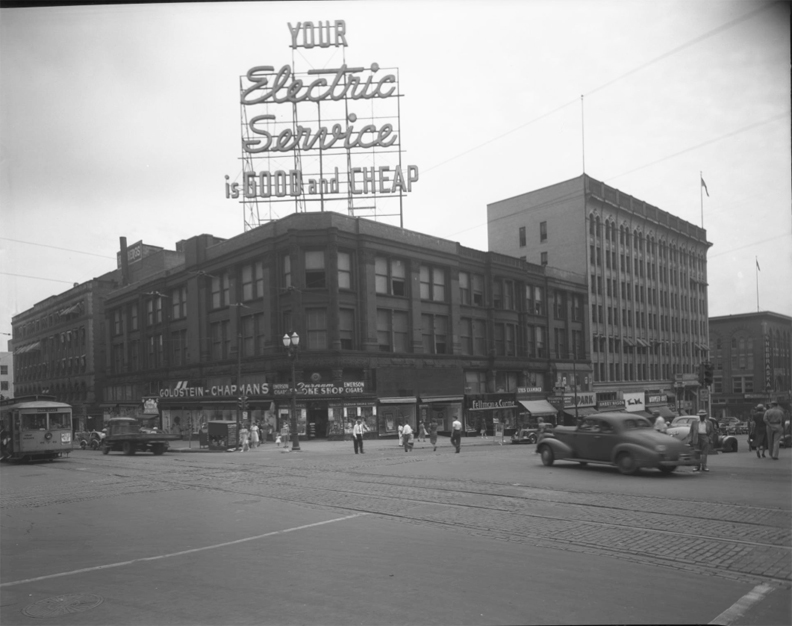
The Paxton Block building on the northeast corner of 16th and Farnam Street. Various shops are on the first floor. Top three floors have been removed. Large electric company sign is on top of the building. Below is the Goldstein-Chapman’s Store. To the right is the Omaha World Herald building. Creator: Bostwick, Louis (1868-1943) and Frohardt, Homer (1885-1972). Publisher: The Durham Museum. Date: 1943
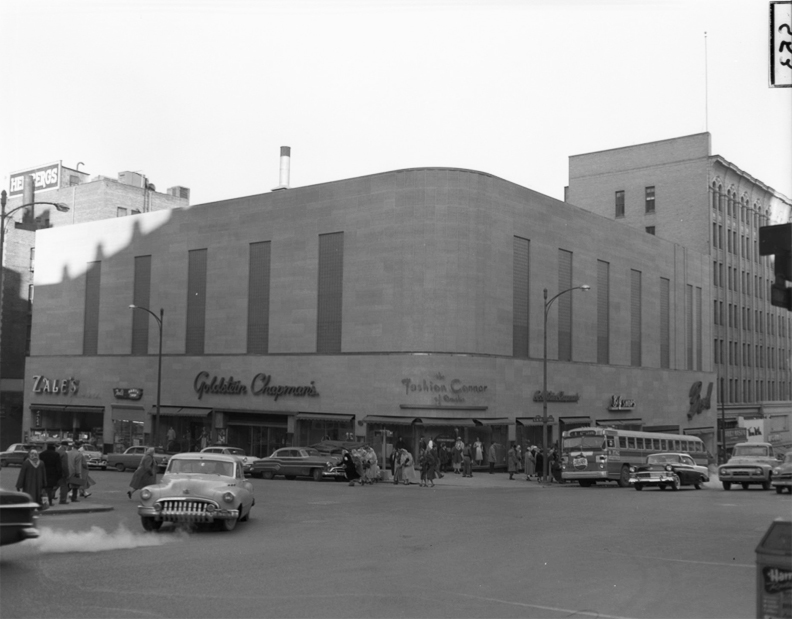
Between 1946-1948, the Paxton Block building was remodeled yet again and changed into this cool Mid-Century Modern structure. Some may remember it when it looked like this. “The Fashion Corner of Omaha.” Traffic is viewed heading west on Farnam Street. Creator: Savage, John (1903-1989). Publisher: The Durham Museum. Date: 1957
In 1979 Goldstein-Chapman pulled up stakes and moved from downtown Omaha out to the lucrative security of the malls. I remember Goldstein-Chapman being at both Crossroads and Westroads when I was young. I still can sing their jingle. At least I think it’s theirs. “Goldstein-Chapman in touch with today. Clothes that make you…” (was it…”shine through”?) Herman Goldstein, president of the company in 1978 wanted to make the downtown location continue to work but was uncertain of the future of the block, which they shared with Kilpatrick’s Department store and Kilpat’s Office Building. When Kilpatrick’s sold to Northern Natural Gas Company, it was yet another department store drainage in preference of western Omaha. Woodman of the World Insurance Company apparently owned the Paxton Block building, dating back decades and was contemplating selling to Northern. Sadly the corner would come down years later for the strange 1985 or 86 ParkFair Mall. I remember the Paul Harris store and Walgreens being tenants there. But the further back I dug, I found that Mr. Goldstein was seriously considering leaving downtown, like so many other department stores, back as early as 1970.
The Residence of the Roaring Twenties
After Frank Salontay’s discerning move to the Goldstein-Chapman building, I also spied his family’s migration to a new residence at 6321 North 31st Avenue in 1924. I was happy to find 6321 North 31st Avenue still standing strong in the lovely Miller Park- Minne Lusa area. The fine homes of Minne Lusa are included in the National Register of Historic Places; this move suggested to me that Frank was making a good living and wanted his children to grow up surrounded by other kiddies. According to recent sale’s records, the home was built in 1923. I wondered if the Salontays had it built? In 1922 daughter Gertrude “Trudy” Salontay was born, joining Frank, Jr.
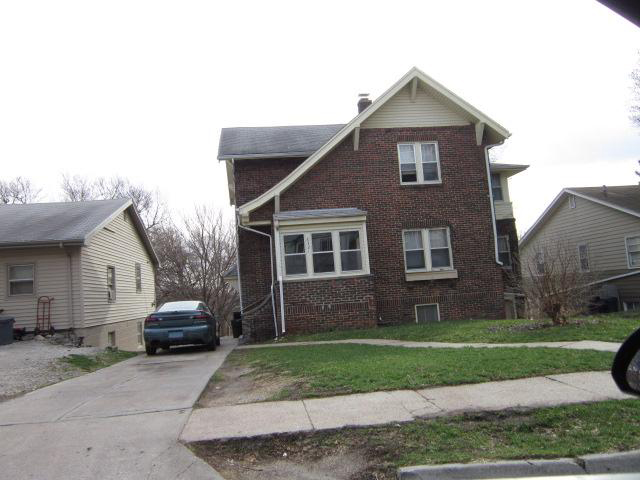

Photos borrowed from Douglas County Assessor and Google Images 2016. I love this house–quite unlike anything on the immediate block. I wondered if the garage portion was added later? I have learned through these detective missions that some families made apartment additions to their homes in the 1930s to bring in more income. Anything asymmetrical with an unassuming front door captures my eye and makes me curious. From August of 1924: “Mr. and Mrs. Frank Salontay will entertain at a garden party and a house warming this evening at their new home, 6321 North 31 Avenue, for about two hundred guests. The yard will be lighted with Japanese lanterns.” I was interested to find that the Salontay children kept horses; by 1928 they were selling a Shetland pony and a year later, another pony.
Salontay & Siegmann Reunite
In August of 1924 I tailed Robert Siegmann back to the Burgess-Nash Department Store where he was then heading up his Black and White Room beauty parlor. At the Beauty Specialists and Cosmetologist State Convention held in the Hotel Fontenelle, Omaha’s two male hair messiahs were reunited, perhaps in the opinion: “Bobbed hair soon will have seen its day.” At said convention, Siegmann was reelected president of the organization and Salontay was made vice president. Now who’s to say, the two might have been friends all along, but it was in 1925 that Robert Siegmann began working at the Goldstein-Chapman salon, alongside his old pal, under the name of Salontay & Siegmann Hairdressers. It was in 1925 that the pair would move to the third floor of the trendy department store.
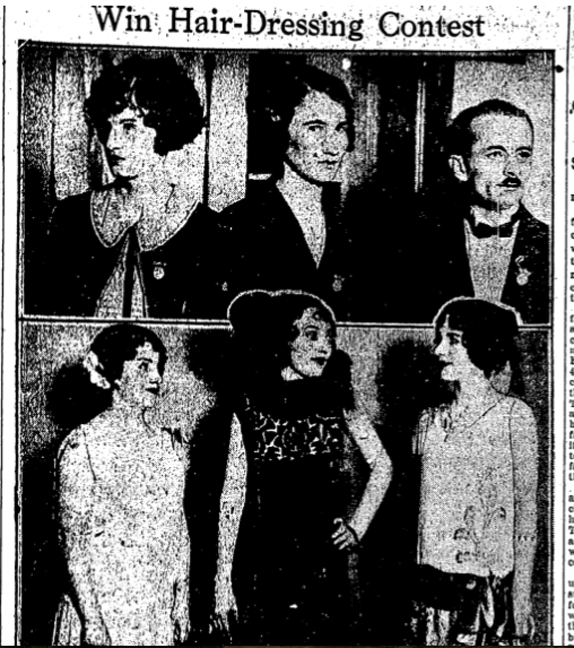
Photograph from the OWH archive of November 1925. The winners in the annual style show of the Omaha Association of Cosmetologists left to right—Mildred Hudgins, third prize; Glenna Gragon, first prize; Frank Salontay, second prize. Their models were shown below; Frank’s model was in the middle, obviously the best. “Transformation of bobbed hair into what Paris fashion experts say is proper for evening way was demonstrated last night in a contest held by the Omaha Association of Cosmetologist in the Gardner Building Auditorium.”
City for Conquest
The 1926 Omaha city directory tipped me off that Frank Salontay had again become an independent hairdresser at Goldstein-Chapman’s 3rd floor beauty parlor; Robert Siegmann had evidently removed on to the 252 Aquila Court salon. I was fascinated to find that in 1928 Siegman (sic) was taken to “police court” by the state barber board, charged with operating without a barbering license. Siegman (sic) contended that “cutting women’s hair was not barbering” and held to a different license. By January of 1929 a district judge revoked Siegmann’s fine and announced that “men engaged in beauty parlor work” had the same rights are “lady cosmetologists.”
Kat O’Connor, my beautiful hairstylist, was game for my Nancy Drewing. Kat let on that even to this day the barbershop business is male dominated and the women’s hairdressing field is made up mostly of female stylists–although many of the world’s top stylists are men. “Think Vidal Sassoon and Kevin Murphy,” she put forward. Male stylists tend to exhibit confidence, dominance, take more chances, own salons, travel, attend competitions–in short, take up more room. After World War I, men were sought after as artistic, passionate, understanding of how to communicate with women and imbued with special insight into how to make women attractive to men. Kat suggested that many female clients also yearn for that subtle flirtation and a male stylists’ compliments are “the icing” on a salon service. Personalities aside, I wondered if Salontay and Siegmann were pitted against each other in the small circles of Omaha?
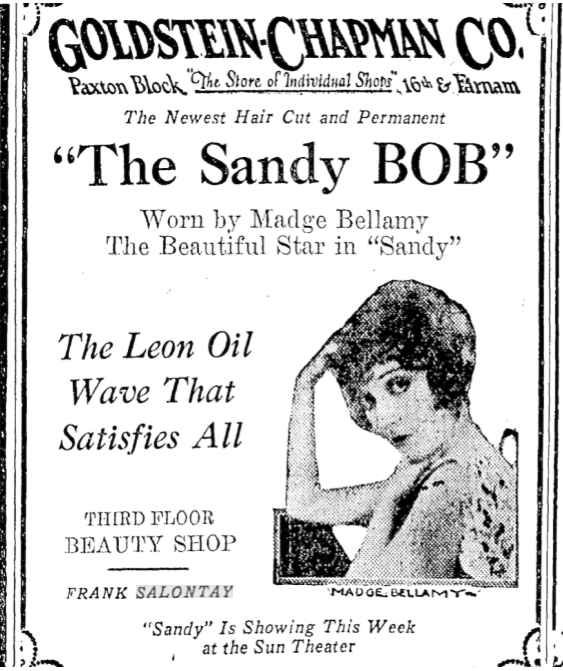
From the OWH archives. June 20, 1926. “The Sandy Bob.” I love this Twenties advertisement and the tie-in to the movies.
Frank Hits His Stride
Frank Salontay became the not so secret beauty maker to high society. Was he a ladder climber? I don’t know that he was a fixture in anyone’s home or country club—his true priority was making a woman look fantastic. His essential instruments appeared to be his talent, some grandiose marketing and a little drama. He wanted his female patrons to look beautiful, picking the best style and color to suit the face. With confidence he selected the center or side part. His original finishings turned out the beau monde of Omaha. I’ve heard whisper that the Ak Sar Ben Queens of yesteryear were under full year stylist contracts for their calendar of society events. Salontay was known as the hairdresser to the majority of Ak Sar Ben queens in his short time living in Omaha. I’ve got to think Robert Siegmann might have been his main competitor. A review of the Ak Sar Ben Queens from this time period would suggest that Salontay was styling the likes of Claire Daugherty Millard, Emma Hoagland Gibbs, Elinor Kountze, Ellanore Baxter Judd, Emma Nash McDermott, Jean Redick Johnson, Peggy Doorley Cowdery, and Jean Dudley Gallagher Day. These are the surnames found on buildings and organizations all over town.
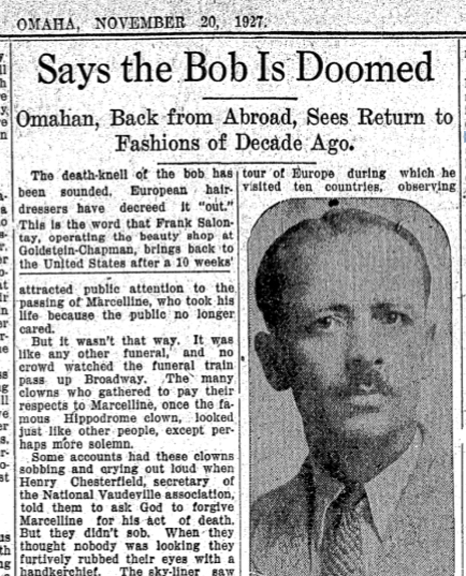
Image from the OWH archives. November of 1927: “Fred Salontay (sic), beauty shop operator, just home from a trip abroad, said the bob was doomed, and that Paris hair dressers were devising methods to disguise short hair for evening dress.” “The death-knell of the bob has been sounded. European hairdressers have decreed it ‘out’. This is the word that Frank Salontay, operating the beauty shop at Goldstein-Chapman, brings back to the US after a 10 week tour of Europe during which he visited ten countries observing the style and fashions of the latest mode in coiffures. What bobs that are left in Europe and there are in the small minority, are most decidedly feminine, in line with the newer ideas of hairdressing.” The more feminine the hair dress the more modish the individual. Fashion of a decade ago, bringing with it the use of curls, puffs and switches. “Paris is no longer the style center for hair creations,” Mr. Salontay says. “Viennese artists have far surpassed the French in artistic creations and are now considered the master artists.” Long hair now means hair that is six inches in length, just long enough to arrange in a formal head dress and not long enough to be inconvenient. Waving, both marcel and finger, will be popular during the season and hair ornaments will again find favor.” During this trip, Frank Salontay visited many major cities as well at his birthplace of Hungary.
The City of Beauty Comes Alive
One of Frank Salontay numerous creative endeavors came to fruition in late September of 1929. I probably don’t need to remind you that the Stock Market Crash hit one month later. These must have been such exciting days for Frank as he designed his modern hair emporium and was able to introduce Omaha to his concept. The whole package, let alone interior, was so very late 1920s, which only made me adore it all the more. “The City of Beauty” as termed by Salontay, has been completed and was “the center of comment of the many who have visited it on the third floor of Goldstein Chapman Company.” The new beauty shop expressed “the new in architecture and service.” Under Frank Salontay’s direction, 20 assistants were his force as “The City of Beauty” disclosed “22 private rooms, each equipped in the most modern manner.” In the center of his design, a fountain was found beneath a large tree. “The entire color scheme of ‘The City of Beauty’ is one of light buff and architecture of Spanish design.” I was enchanted by the words but the images I found sealed the romance.
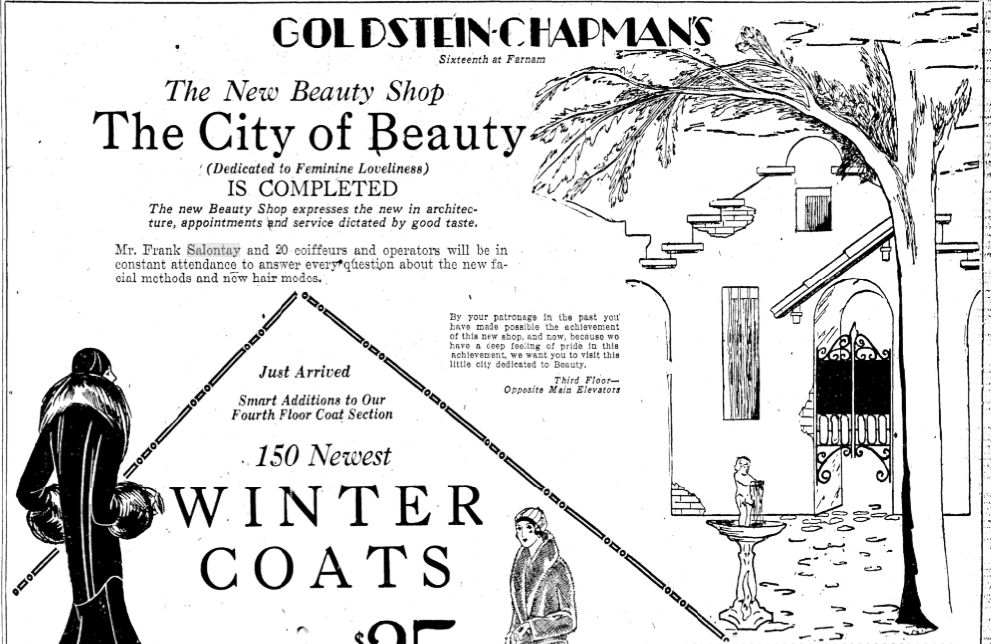
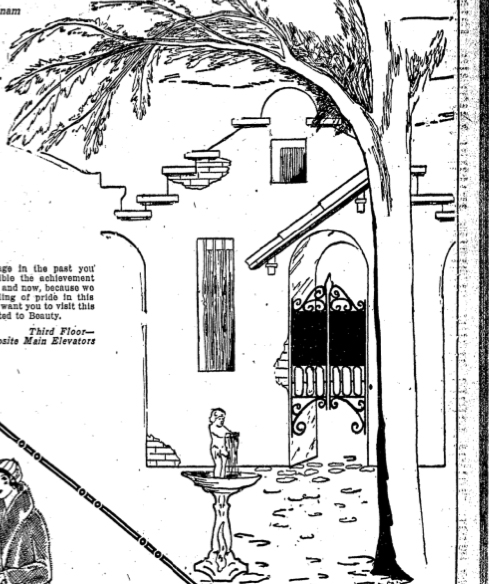

Images from the OWH archives. 1929: “The New Beauty Shop The City of Beauty (Dedicated to Feminine Loveliness) is COMPLETED. The new Beauty shop expresses the new in architecture, appointments and service dictated by good taste. Mr. Frank Salontay and 20 coiffeurs and operators will be in constant attendance to answer every question about the new facial methods and new hair modes. By your patronage I the past you have made possible the achievement of this new shop, and now, because we have a deep feeling of pride in this achievement, we want you to visit this little city dedicated to Beauty.”
I marveled at the little Spanish city within the walls of Goldstein Chapman. You know how I love a good theme. I found the following scrumptious interior photos at the Durham Museum. I could stare at old beauty parlor photos all day and night and just might.
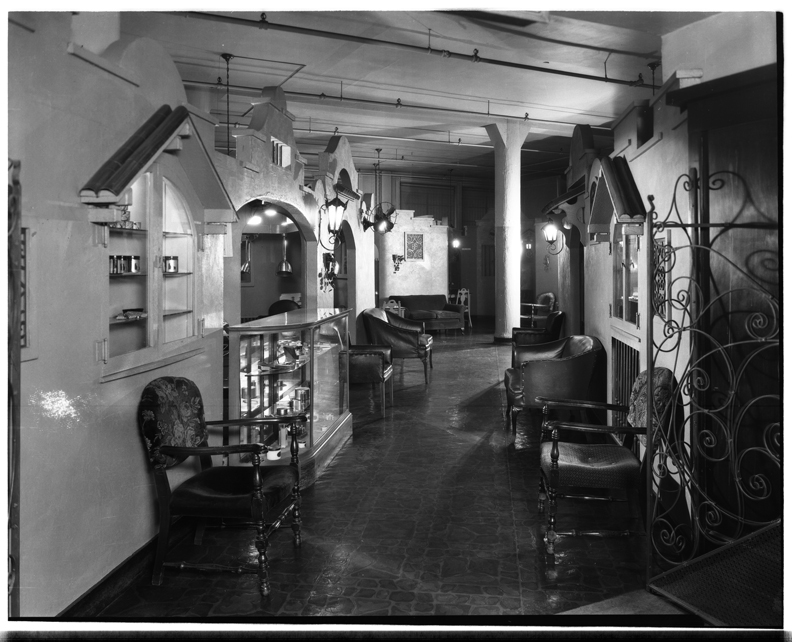

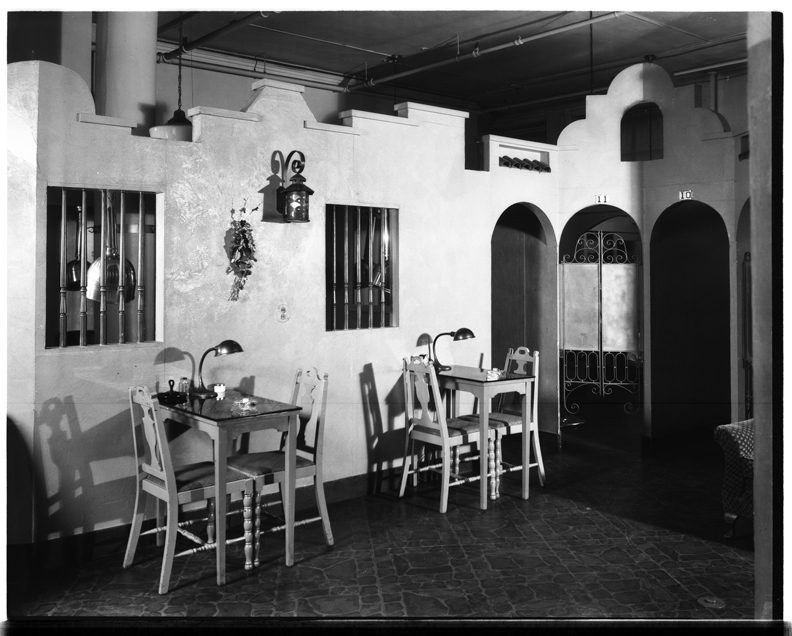
Frank Salontay’s City of Beauty. I believe I had this linoleum floor, or something similar, in an old apartment building I lived in.
Frank Salontay’s Beauty Salon
As quickly as he had debuted The City of Beauty in September of 1929, Frank was announcing yet another business move in July of 1930. I was not quite prepared to question his actions, I said to myself (and sincerely), but I believed I understood in a way, as girl detective looking back on those years. I understand that the Great Depression was upon America and even in well to do families, there was newfound focus on the pocketbook. Did The City of Beauty have to close up shop? Were Frank’s expenses too great? Did Frank Salontay have a falling out with Abe Goldstein or the board of Goldstein-Chapman? Regardless of my needling hunches, Frank would move over to the Faidley Building and set up the simply named, Frank Salontay Beauty Salon. Armed with his assistants– Frances Boyer, Miss Opal, Miss Jensen, Miss Bargar, Miss Viola Corbett, Augusta Bascom, Miss Belle and Miss Casey, Frank’s new advertisements were low key and budget focused—reading the room, as they say.
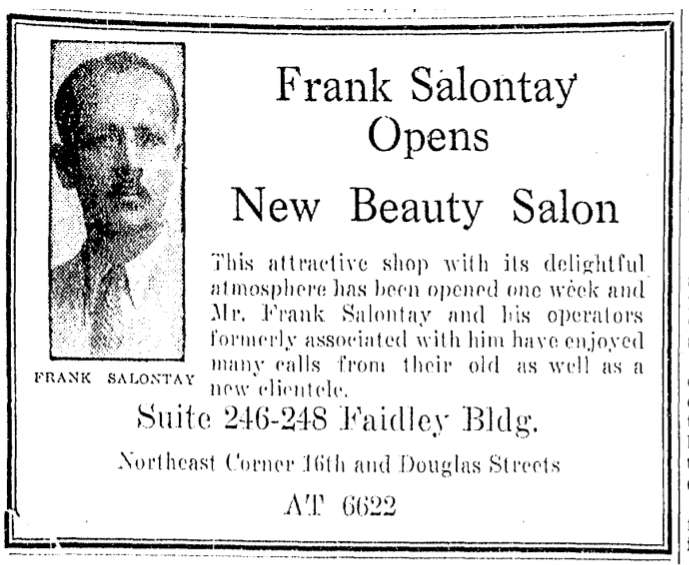

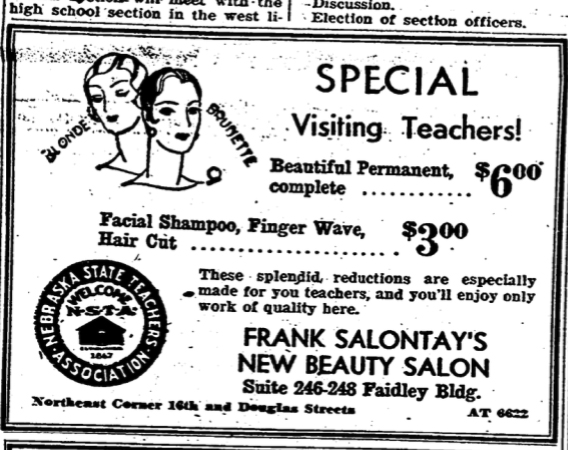
Images from OWH archives of 1930.
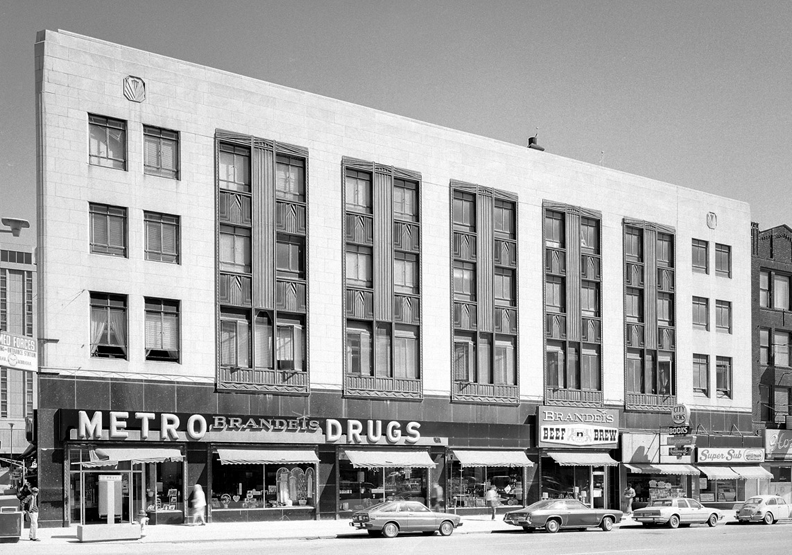
Great photograph by Lynn Meyer, Omaha City Planning Department. 1980. Photo borrowed from the History Nebraska site. I would review the Omaha City Directory of 1930, which pointed that Frank Salontay’s New Beauty Salon Suite was in 246-248 Faidley Building. “Northeast corner of 16th and Douglas.” According to Nebraska State Historical Society, the Faidley Building was constructed in 1930. Interesting that even in the difficult years, Frank landed himself a spot in a brand new, gorgeous building. Down at 1514 Douglas Street, (also labeled 115 South 16th Street), the Faidley building was designed by John & Alan McDonald, Architects. The Faidley was demolished and is now a parking garage.
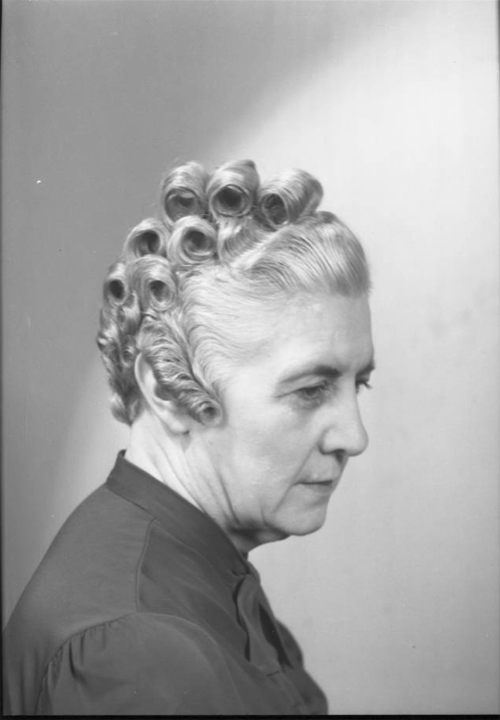
The photographic clue read: “Side view of a hairstyle from Frank’s Beauty Parlor in Omaha, Nebraska.” Was this the work of our Frank Salontay? I believe so. By the by, don’t worry—this set would be brushed or combed out into soft waves. A preliminary stage of Crowning Glory. Creator: Savage, John (1903-1989).
The 1930 Census revealed that Frank and Victoria had had a third child, Miss Mary Salontay, then age five. I went on watching Frank Salontay as the time ticked by.
Ruedy’s Department Store
In August of 1931, Ruedy’s Department Store had their grand opening and formally announced that our man, Frank Salontay, would operate his beauty parlor on their fifth floor. I had never heard of Ruedy’s and was excited to dig in.
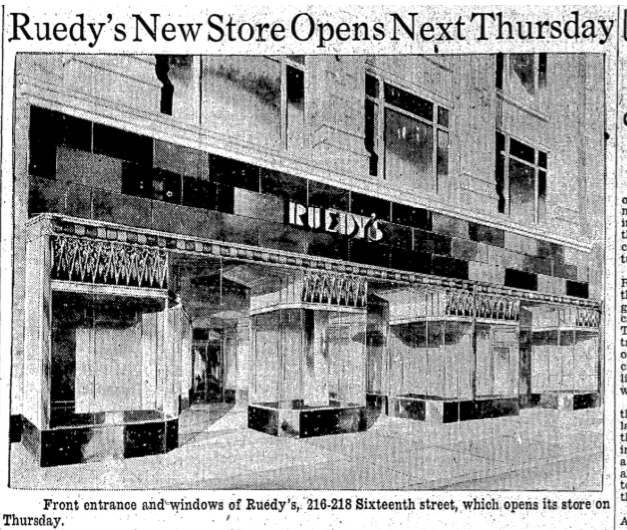
Image from the OWH archives. Ruedy’s was an all new store at 216-218 South 16th. “The front façade offered black and aluminum trimming, each window is a separate unit with a background of Australian walnut.” Frank’s fifth floor was also shared with the fur department and the general offices. Fred J. Ruedy was President; Robert Schweser was VP; I was surprised to find Frank Salontay as Secretary and Treasurer. “Filled to capacity with New Smart merchandise from New York’s and Paris’s fashion manufacturers,” there was even a bargain basement. How had I never heard?
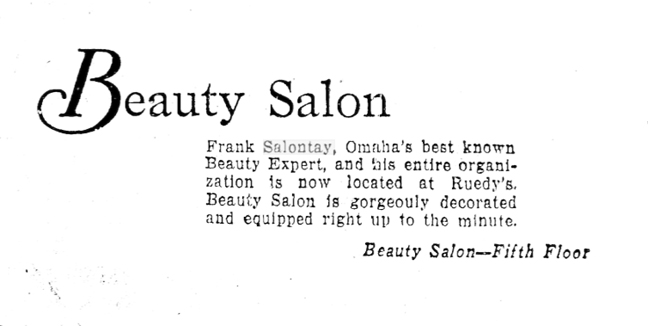
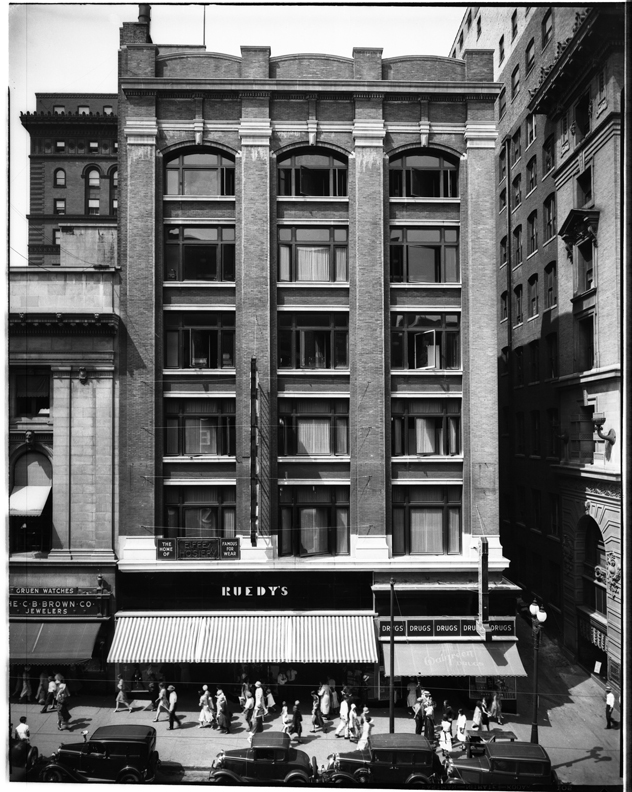
A straight shot of Ruedy’s at 216 South 16th Street. To the right, across the alley is the Brandeis Store. Creator: Bostwick, Louis (1868-1943) and Frohardt, Homer (1885-1972). Publisher: The Durham Museum. Date: 1931-08-23
Back in February of 1931, the World-Herald lent many a hint. Ruedy’s Inc had obtained a lease in 4 and 1/2 million dollar deal. “A newly formed corporation with a capital stock of 100 thousand dollars has purchased the 99 year lease of the J. G. McCrory store at 216 South 16th Street,” announced Fred J. Ruedy, president. The building was owned by William H. Schmoller of the Schmoller-Mueller Piano company, from whom the McCrory Company purchased the 99-year lease. The lease still had 90 years to run. This deal made me a little nervous considering the Depression and all. The McCrory Company was said to vacate within 60 days. Walgreen Drug Store also subleased a portion of the building, opening its third Omaha store at that location. Ruedy’s was estimated to spend between 50 and 60 thousand on remodeling and installation of new elevators.
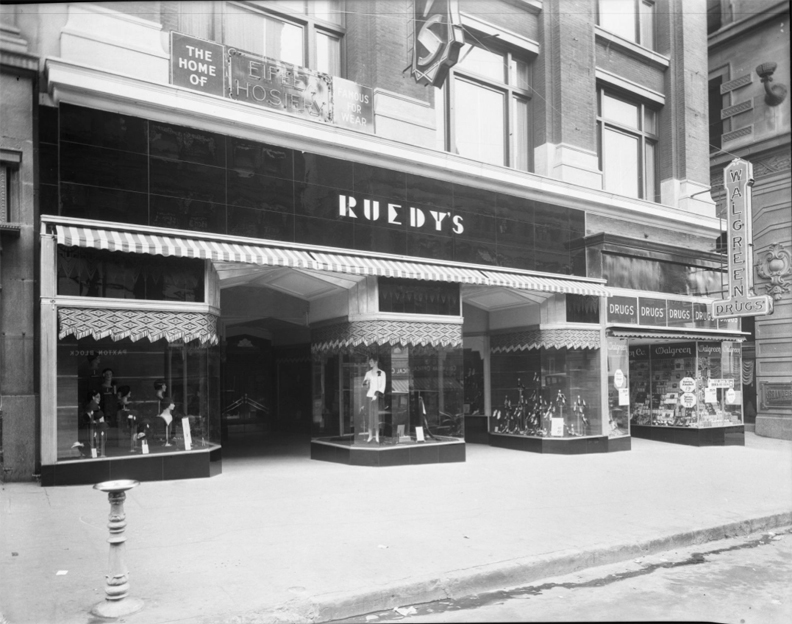
I always love to find the actual photos that I see in the archival newspapers. This one give a better view of that Walgreens. Creator: Bostwick, Louis (1868-1943) and Frohardt, Homer (1885-1972). Publisher: The Durham Museum. Date: 1931. The font obsessed in our group might be fainting right now.
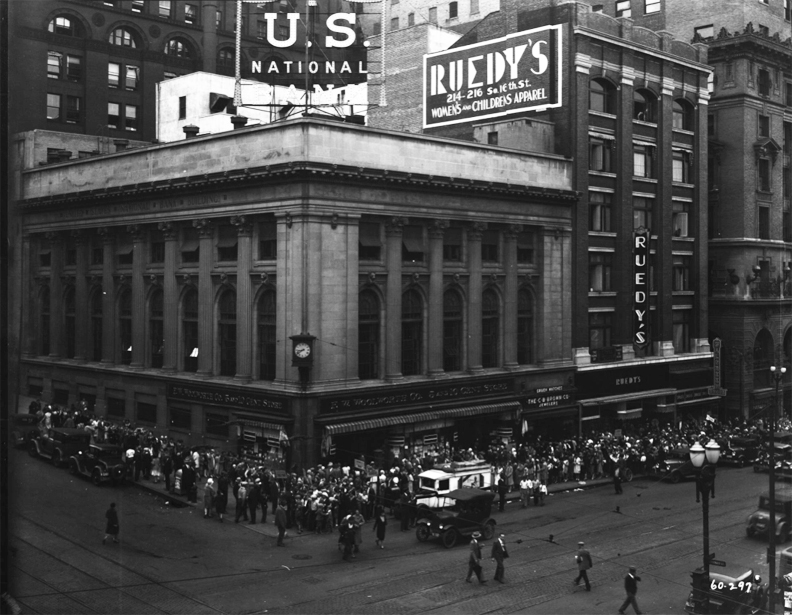
The darker, brooding, Noir Omaha that I desire. Looking at the northwest corner of 16th & Farnam Street. The sidewalks are packed with people. There is a large clock on the corner of a building. Notable buildings include; the Woolworth Store in the U.S. National Bank Building and the Ruedy’s Store. Creator: Bostwick, Louis (1868-1943) and Frohardt, Homer (1885-1972). Publisher: The Durham Museum. Date: 1931-10-10.
I enjoyed this “woman’s piece” from April of 1932 uncovered in the World-Herald: “‘What is all the commotion about?’ I asked of Mr. Salontay on entering the Beauty Salon. Why there seemed so much activity? Of course the many years that Mr. Salontay has been beautifying womanhood and standing back of every guarantee has proven his worth in this community. The 14 beauticians that have been trained to give beauty satisfaction and turn out only the very best in permanent waving and all other beauty work are appreciated for their worth. Really it was a joy to go into this beauty salon and get the fine optimistic reaction.” A visit to Salontay’s within Ruedy’s stretched the gamut of beauty. One might catch a chance viewing of Ak Sar Ben Royality (Mr. Salontay was noted as “hairdresser to the Ak Sar Ben queens of the last 15 years”) or receive an Egyptian henna treatment for “only 75 cents.”
I was left to stare into the row of fifth floor windows and daydream about the man I followed.
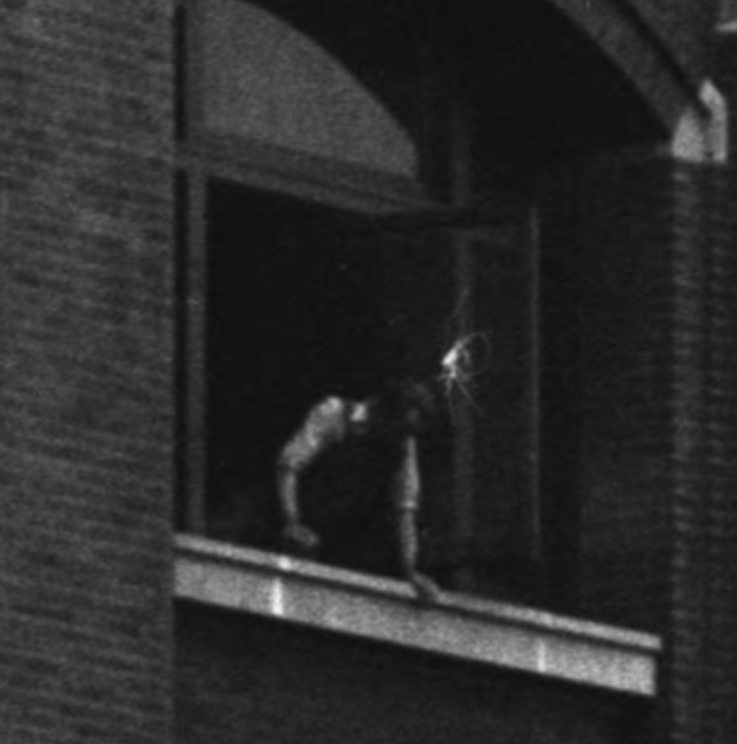
Upon magnification of said fifth floor windows of Ruedy’s from the above photograph, I believe I might have found my Frank Salontay. Could it really be him? What other gentleman would be looking out that window?
If you are wondering, like me, why this department store building of “five floors,” clearly had six stories, here is what I’ve found. I believe that old school department stores had a main floor and sometimes a mezzanine floor that were not numbered. Meaning the floor above would sometimes be labeled the first floor. A basement was a basement. If anyone knows more about this phenomenon, I’d be grateful for more details.
The Securities Building
Shockingly Frank Salontay moved his beauty parlor over to the Securities Building on the southeast corner of 16th and Farnam in December of 1932. This upstart seemed like it might have been a more difficult situation considering he was a partner in the Ruedy’s store. What had transpired within eight months? I did find that Ruedy’s sadly folded by 1935. From what I could suss out, it was a hushed closing. That summer the J. L. Brandeis & Sons Department store would purchase Ruedy’s remaining merchandise and there was not much more offered. But that was years after Frank had left. Perhaps that huge business venture was doomed in the early days of the Depression. After learning they had closed within a few short years, I understood more why I had never heard of Ruedy’s.
Was I getting a bit anxious with all of Frank Salontay’s professional upheavals? I suppose so. I mean, I tried not to judge, as I stood under the weathered awning in the envisioned darkened recesses of Ruedy’s, taking fitful notes. It was at this point that I needed to check in with my hairstylist, Kat O’Connor. According to Kat, even the most successful of snippers struggle to keep a returning customer base. “If you move too much, in today’s market, you will lose clients. But was it different in the 1920s and 30s?” We both wondered this. Were Salontay’s frequent moves and reimaginings a show of creative whimsy, a hot temper, recreation? One could argue that each transition was progress for Mr. Salontay. Or did the artistic coiffeur just like a frequent revamping of his environ? Even Miss Cassette used to sign different historic apartment leases yearly and exchange jobs like they were nightclub heels. In Kat’s estimation, close relationships are built between hairdressers and their clients. Hours would be spent washing, combing, oiling, styling and ornamenting these women’s hair. A salon, in any time period, she wagered, needed to be a safe, comfortable place, akin to a second home. Did all of these moves stimulate Salontay’s clients’ need for change also or did it hinder their trust in him?
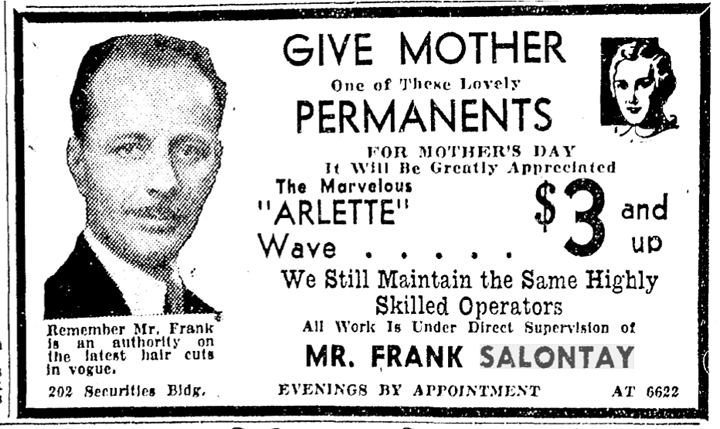
The Rose Realty-Securities Building was originally a commercial structure built for the Rose Realty Company. We now simply call it the Securities Building. Built in 1915, some say 1916, this 47,577.00 sqft structure was designed by Fredrick A. Henninger with strong hints to the Sullivanesque style. This ol’ gal is dream conjuring; one of the last vestiges to the old 16th Street Retail Heaven– offering the large display windows of yesteryear. These ones are gloriously framed in bronze with receding entries. You might have read my Napier’s Booterie Investigation from years ago but if not, here’s your chance. I will also leave this report in a link for further architectural exploration. https://www.nebraskahistory.org/histpres/nebraska/douglas/DO09-RoseRealty-Sec-Bldg.pdf
All records hint that the Frank Salontay Beauty Salon (202 Securities Building) was located on the second floor. In those days this structure was chock full of businesses, retail and offices, not apartments. The Omaha Housing Authority bought this building in the 1990s and the upper floors are now living spaces. By the way, I’ve heard the Omaha Housing Authority is looking to unload this beautiful structure and has her on the market.
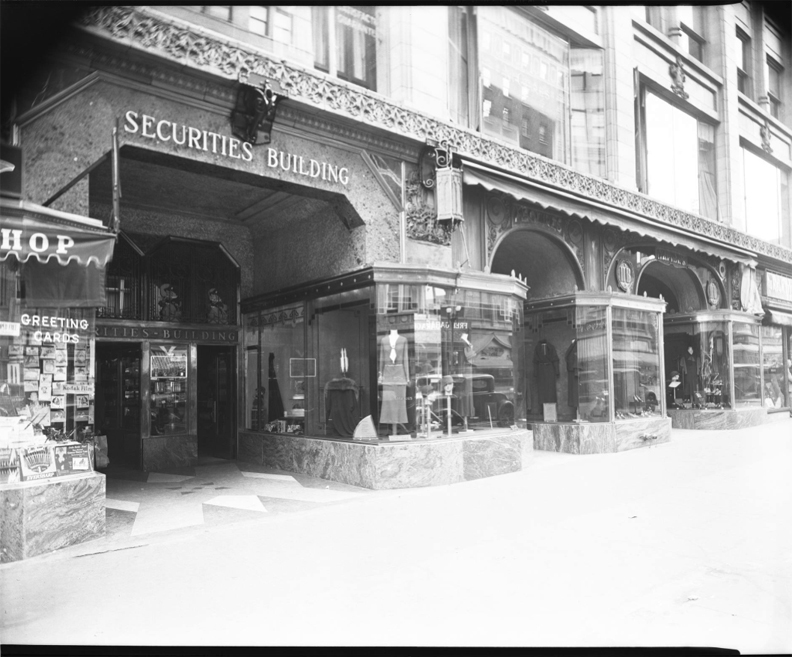
Detail of the Securities building. The main entrance to the Securities building stands on 16th and Farnam. The shop is on the left. “Greeting cards”. Window displays line the sidewalk. Creator: Bostwick, Louis (1868-1943) and Frohardt, Homer (1885-1972). Publisher: The Durham Museum. Date: 1931-10-25
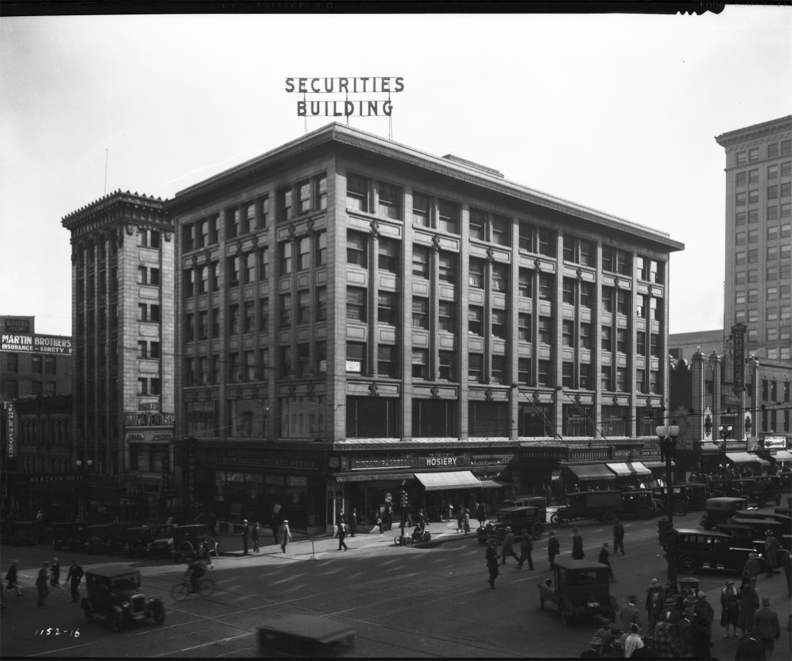
Securities Building on 16th and Farnam. The bottom floor of the building is the Union Pacific ticket office. “Flowers” “Barkers” “Omaha Dentists” “Hosiery” “Martin Brothers Insurance”. The Securities Building is once again for sale currently, as of this writing. Creator: Bostwick, Louis (1868-1943) and Frohardt, Homer (1885-1972). Publisher: The Durham Museum. Date: 1927-10-13.
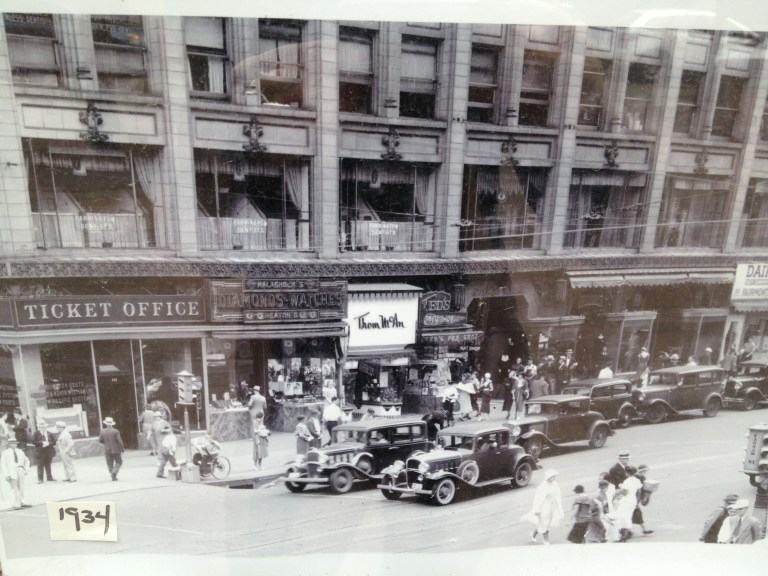
A once vital downtown. The row of second floor windows of the Securities Building. Frank Salontay potentially had his salon within. This image is labeled 1934. I took a photo of this photograph, which I found displayed in the window of the old Securities Building. I am not sure whom to credit.
The Shadow Strikes
Another delightful surprise was this advertisement from December of 1932. Frank brought in another smooth male operator, this one named “Paul.” I liked the quotes, as if his name wasn’t truly Paul. Presumably the quotes noted as artistic casualness of his first name, rather than calling him Mr. Jasper. These are my guesses. Well “Paul” didn’t last long. I can tell you that much. There could only ever be one peacock in the Frank Salontay Show.
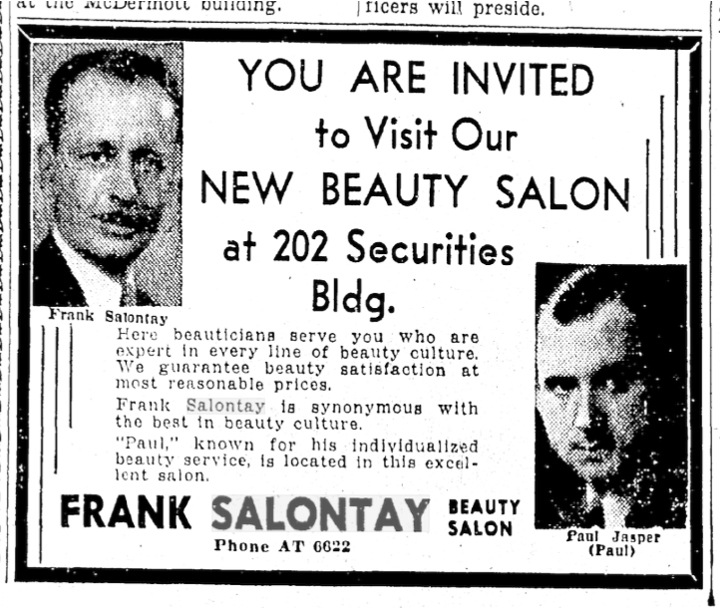
I determined Mr. Salontay had more beauty and glamour shots than anyone in the business! I’ve only included a few for this investigation at the risk of appearing obsessive, but I’ve got every last glamour photograph I could get my hands on for some rainy day when I’m 80 and get to thinking on Frank. “Frank Salonty’s embraces all the essentials which Milady seeks in the ideal Beauty Salon: a convenient location; a staff of skilled operators; materials of excellent quality and a refined, dignified atmosphere. All work under the direct supervision of Frank Salontay at 202 Securities Building.”
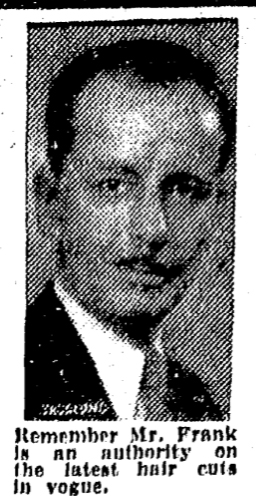

Natelson’s
In my dream I could see the crisp black words painted on the new sign read: “Frank Salontay Beauty Salon.” The sign was placed on a stylish but functional black easel within the grand doors of Natelson’s entry at 1517 Douglas Street. Was anyone in our group of sleuths really surprised at this point that Mr. Frank Salontay had taken up quarters in the popular Natelson’s department store beauty salon by 1935?
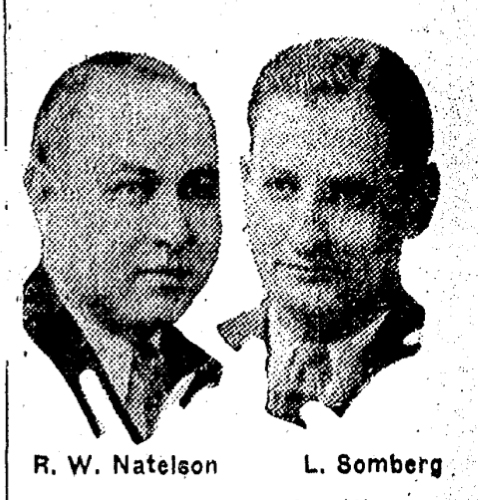
Omaha was told there was a new six-story building going in the location previously inhabited by the Silk Shop. The year was 1927 and the Brandeis Department store had originally showed interest in taking up the new lease but it was ultimately the team of R.W. Natelson and Louis Somberg that signed on the line. The two would open a women’s department store, Natelson’s, at “1517 Douglas Near Sixteenth.” In a stroke of marketing genius straight out of 1928, the duo called for the public’s creative vision in coining their new department store’s slogan. Occupying five floors including basement and mezzanine, with its upholstered furniture and drapes, the luxurious environment gave the impression of a drawing room rather than a sales floor. Louis Somberg later became president and his family would manage the soon to be Natelson’s empire. Like many other little big towns, Omaha boasted many small, family owned department stores like Brandeis, Goldstein-Chapman’s, Hovland-Swanson and Herzberg’s. Small and refined these stores were tailored to the towns in which they sprang up. This was before the national chains took over. Natelson’s would enjoy success and grow to a local chain, stretching out to the malls across town.
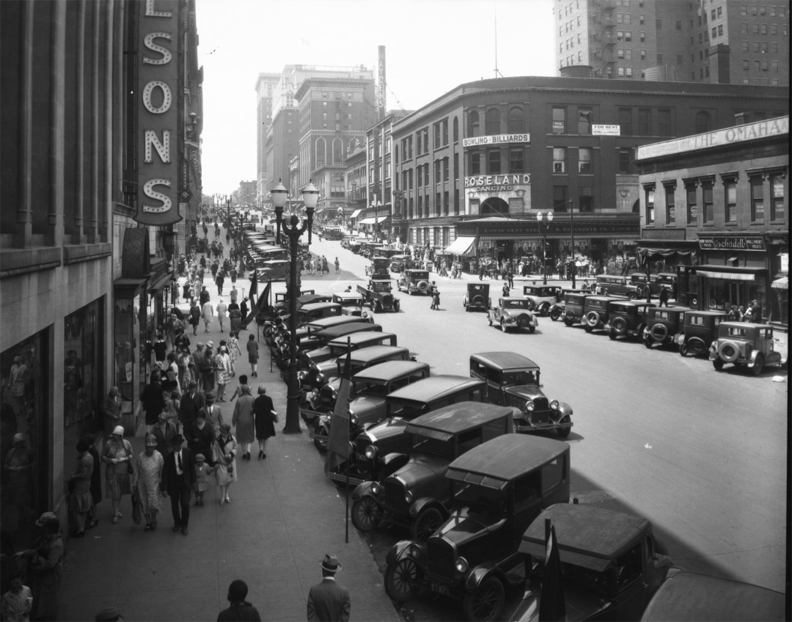
Looking west on Douglas Street from east of 16th Street. There are cars parked on the street and there is car traffic in the street. There people walking in the area. Notable buildings include: the Natelson’s Store, the Herzberg Store and J.L. Brandeis on the left, the Roseland Dance Hall and the Woolworth Store on the right. Creator: Bostwick, Louis (1868-1943) and Frohardt, Homer (1885-1972). Publisher: The Durham Museum. Date: 1929-05-25.
The first Natelson’s opened at 1517 Douglas Street officially in October 1929. The first “branch” would follow at Crossroads Shopping Center in 1960. But that downtown location, “on Omaha’s Fifth Avenue” was a solid bet. The Sombergs maintained 1517 Douglas until 1980. It wasn’t until the entire block of buildings was razed for the building that housed ConAgra and NorChem corporate offices, that Natelson’s even thought of a transition. The Somberg’s moved their Natelson’s store to the Rialto Theater building. By 1983 they opened a second downtown store within the Galleria Mall—the Brandeis building’s new fangled suite of shops. In 1986 the Rialto Theater building was razed and Natelson’s moved into new digs at the ParkFair Mall (previously discussed as the original Paxton Block building.)
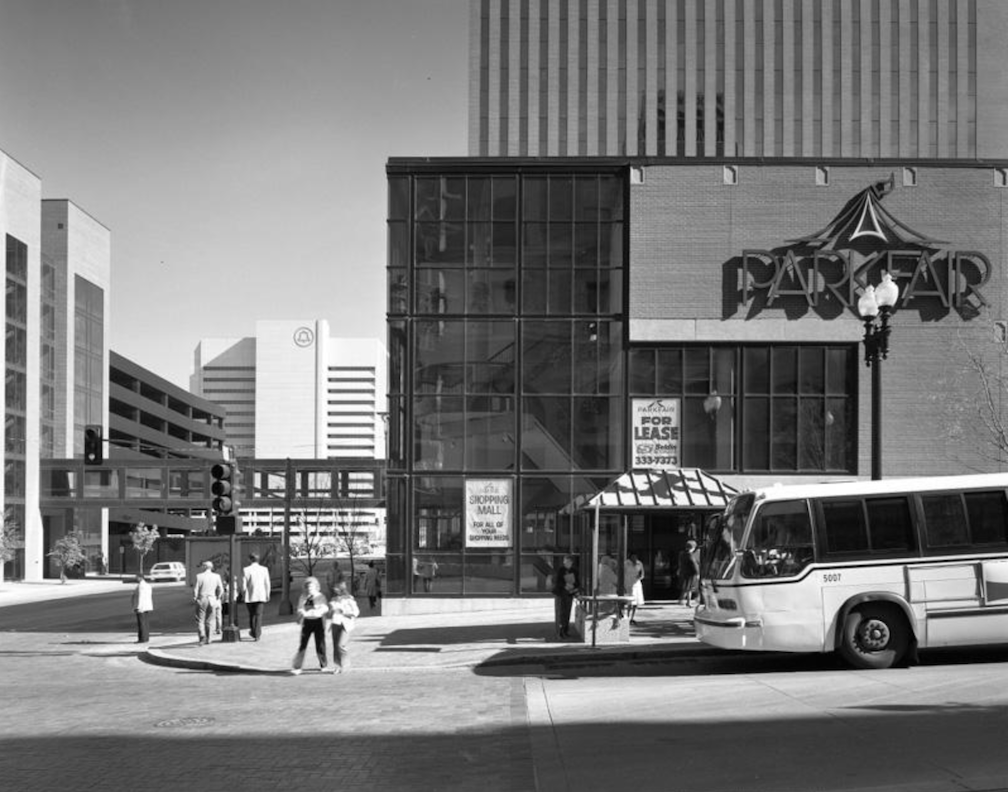
The weird Park Fair Mall in the 1980s. Photo by Lynn Meyers.
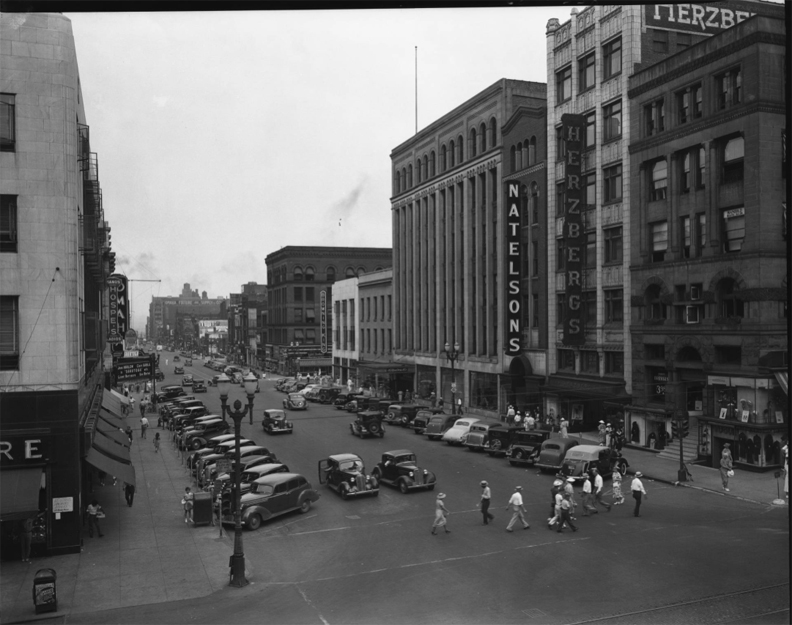
Looking east on Douglas Street from 16th Street. There are people walking in the area. There are cars parked on the street and car traffic in the street. Notable buildings include: the Browning-King, Kilpatrick’s, Natelson’s and Herzberg’s stores. Creator: Bostwick, Louis (1868-1943) and Frohardt, Homer (1885-1972). Publisher: The Durham Museum. Date: 1937-08-03.
We can only assume what the Frank Salontay Beauty Shop at Natelson’s looked like, what it felt like…for within a year or less, he had moved on.
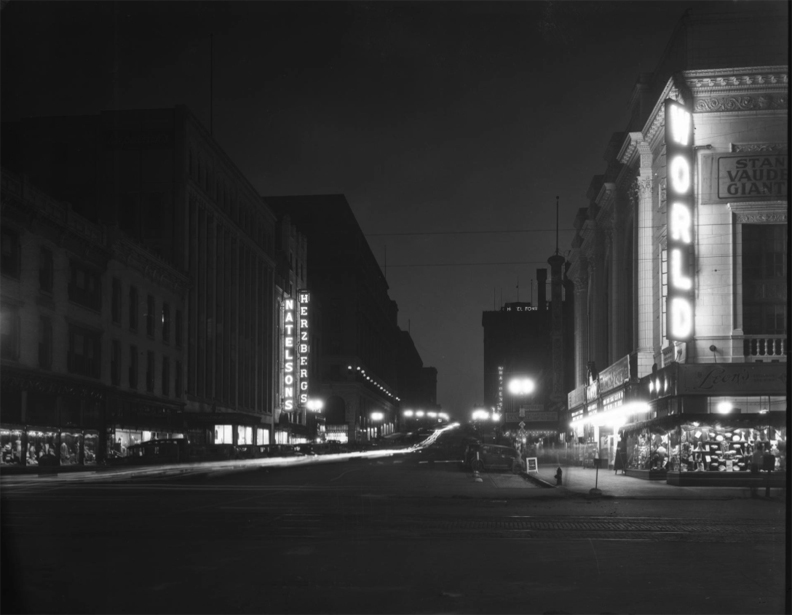
One of my favorite images from this investigation. Night shot looking west on Douglas Street from 15th Street. There are cars parked on the street. Light streaks are moving traffic. Notable buildings include: the Browning-King Store, the Natelson’s Store, the Herzberg’s Store and the J.L. Brandeis Store all on the left and the World Theatre on the right. Creator: Bostwick, Louis (1868-1943) and Frohardt, Homer (1885-1972). Publisher: The Durham Museum. Date: 1929-06-27.
A Brief Return to Goldstein-Chapman
The 1936 city directory disclosed that Salontay had oddly returned to the Goldstein-Chapman Company. I cannot imagine Frank walking into The City of Beauty again, a place that he had created from the ground up. Perhaps it is because I know he left Omaha shortly after that I assumed he returned to Goldstein-Chapman only as a means to an end. Of course I do not know the true calculation. Also I had to remind myself that these were troubled times. Who knows what was going on financially, behind the scenes? In other clues, the Goldstein-Chapman Beauty Salon was called just that—queerly no mention of “The City of Beauty.” Had the themed beauty salon fallen from fashion? Another interesting note was that Miss Ward was brought in to manage the Goldstein-Chapman salon while Frank Salontay was employed there. Perhaps this arrangement allowed him to focus on aspects of the business that he enjoyed.
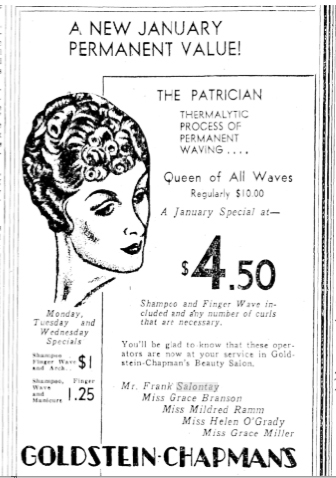
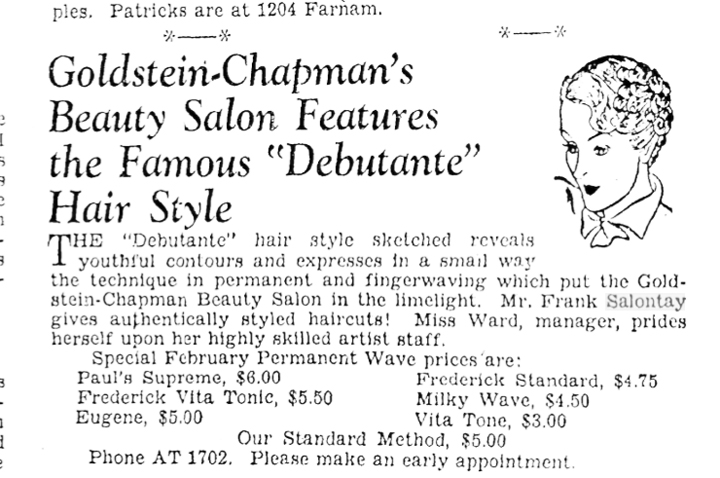
You Only Live Once
While I was quick to find Mrs. Victoria Salontay active in the Women of the Altar Society of the Church of the Blessed Sacrament in May of 1937, I had a harder time tracing the Mister. It wasn’t until his California license examination popped up in July of 1937 that I had a sigh of relief. His new license was issued that September. This tickled me to no end. His Nebraska License was originally dated Feb 13, 1920 and was due to expire on January 1, 1938. “I have actually engaged in the practice of the occupations of hairdresser and cosmetician for a period of 25 year prior to the date of making this application and have practiced the following branches of cosmetology.” The following techniques were checked off:
Marcel waving
Paper curling
Hairdressing
Permanent waving
Finger waving
Pin curling
Brush curling
Hair cutting
Shampooing
Scalp massage
Hair bleaching
Hair coloring
Manicuring
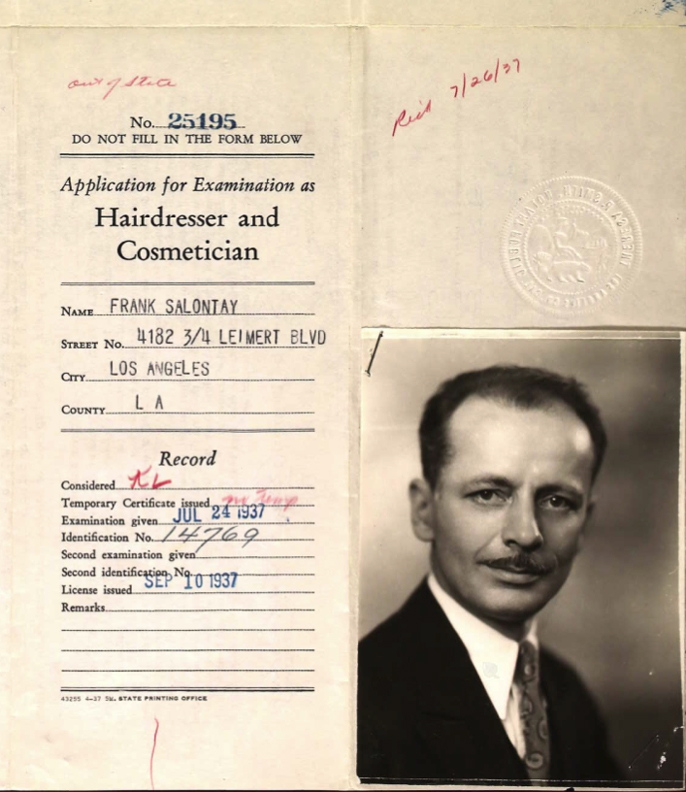
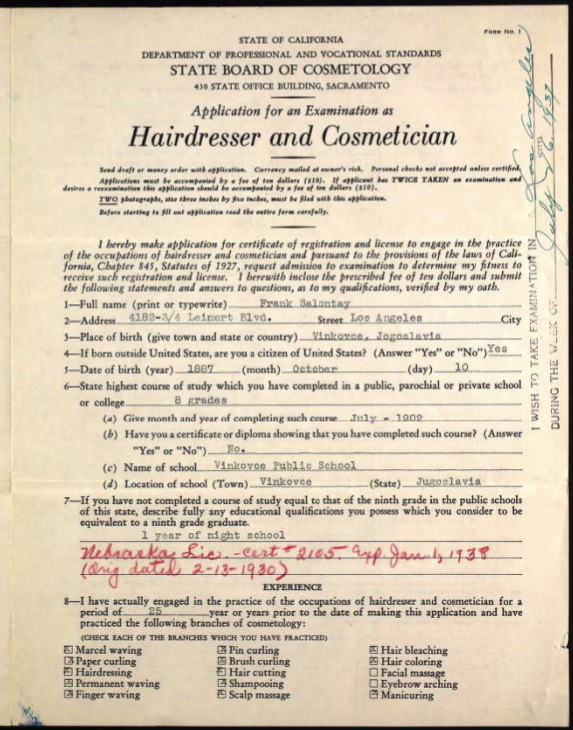
The richest bit of evidence yet. I felt like I was walking on air to uncover these two documents.
They Won’t Forget
The family followed Frank Salontay to California in short order after selling their house in Minne-Lusa. Of note, as much as Frank relocated his business around town, the family held tight in that pretty home. They unloaded their furniture in one fell swoop.
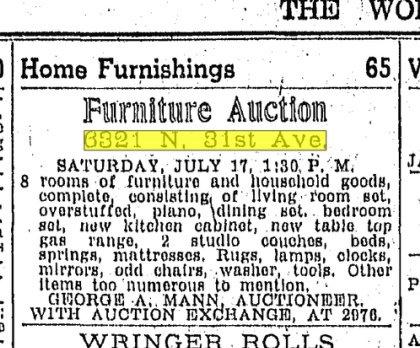
Found in the OWH want ads in July of 1937.
I was actually glad there was no Salontay family registered in the 1938 Omaha city directory nor 1939 for it meant Frank Salontay had made it in California. He had long outgrown Omaha, was ready for a new flock of habitués and from the sights of it, had worked through every glorious option of a beauty salon in this town. The Pasadena Post of 1940 gave further lead that our man Salontay had established his own “hair dressing studio.” I will admit I did not pursue Omaha’s mysterious coiffeur to the degree I had while he was in Omaha but I did trace him just long enough to find that familiar pattern that I knew and marveled at. By October of 1944 he had relocated. The Fresno Bee Republican paper divulged “Frank Salontay, Continental Hairstylist” was to have the Opening of Salontay’s Beauty Salon at 303 Patterson Building. “The hairdresser has years’ experience in beauty both in Europe and the States. He operated in Budapest, London, Paris…”1949 delivered yet another refashioning of his beauty prowess at his salon at 2014 Tulare Street in Fresno. The Fabulous Frank Salontay was back and reinvented himself again and again.
“Frank, I won’t soon forget you–Beauty Expert to the Queens of Omaha. It’s been my pleasure to follow you,” I gushed as he climbed into his taxi. He shrugged off-handedly, “To the train station, driver.” I imagined he didn’t look back at his home or even look out at the well-remembered streets as he left Omaha. I was so happy I had found him at all.
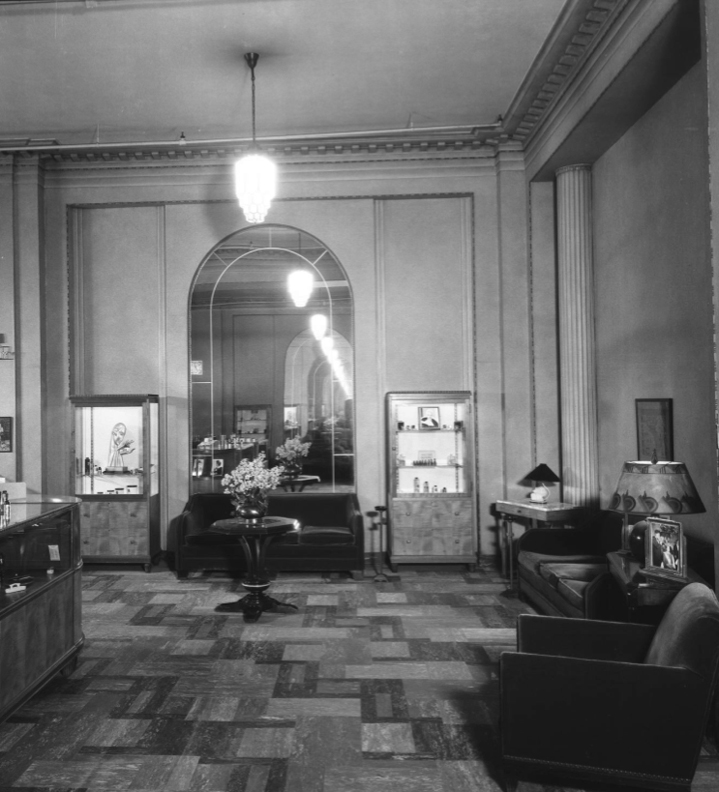
This is only a small part of the story. I welcome your feedback and comments on wonderful and mysterious Frank Salontay, these historic buildings, the old downtown Omaha, particularly 16th Street memories, and lore of vintage beauty parlors. If you are a relative or knew the Salontay family, perchance, please let us know anything you want to share. Feel free to leave a thought in Comments. I welcome you to poke around with your flashlight. Investigate. Hide in the shrubbery. Look under these rocks and down those alleyways. I am more than pleased to have you tiptoe about. By the time you head for home, I hope you have been fully Sherlocked and Satiated. Thank you, detective friends.
If you like what you see, you can keep up with my latest investigations by joining my email group. Click on “Contact” then look for “Sign me up for the Newsletter!” Enter your email address. It will then display “Thank you, your sign-up request was successful!” Make sure to check your email address to confirm. You will get sent email updates every time I have written a new article. Also feel free to join My Omaha Obsession on Facebook.
© Miss Cassette and myomahaobsession, 2020. Unauthorized use and/or duplication of this material without express and written permission from this site’s author and/or owner is strictly prohibited. Excerpts and links may be used, provided that full and clear credit is given to Miss Cassette and myomahaobsession with appropriate and specific direction to the original content.
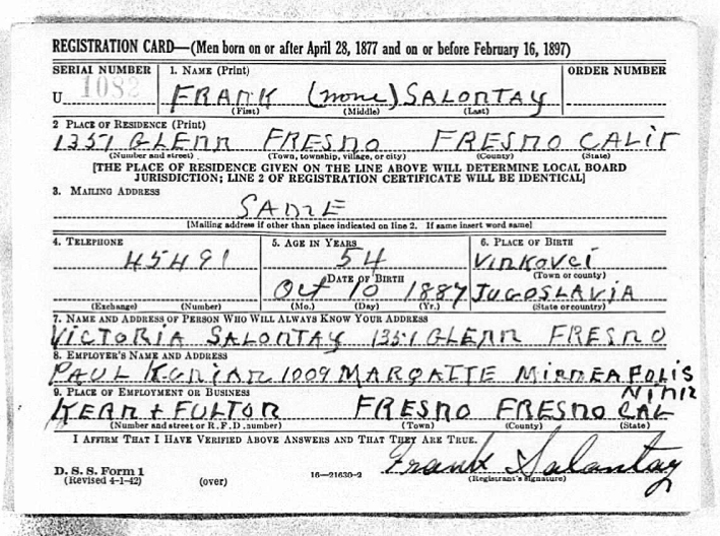



Amazing, as always.
A few unsolicited thoughts…..
1) The Fontenelle, when it first opened and throughout its life to one degree or another, segregated by sex. When it first opened the Douglas Street level (which was the main lobby level) was deemed suitable for women. That’s where the tea room and women’s lounge was (there was a women’s lounge because of the Edwardian ideal that “nice” women couldn’t and wouldn’t want to be mingling with strange men).
The 18th St. level (underneath the lobby, and with its own entrance) was the “men’s level”: The barber shop, billiards room, telegraph office, and grille were all there, and women were not welcome. Even until the very end, women were not allowed in that bar until after 4pm or thereabouts.
The hotel opened in 1915, in the very waning days of the Edwardian Era, and Gene Eppley acquired the lease in about 1920. I think that he was the one looking at that big dumb empty women’s lounge and saw dollar signs, so he called Mr. Salontay. Later, when prohibition was repealed in Nebraska, that same space became the official Fontenelle Cocktail lounge (while he converted the former Tea Room to The Bombay Room).
2) I love the “Your Electric Service Is Good and Cheap” sign. The Paxton Building was, at one point, the offices for Nebraska Power (the private precursor to the current OPPD), and employer of my Grandfather, who was one of their linemen. He went on to have a long career with OPPD, retiring in the early 60’s.
3) Ruedy’s was a complete surprise to me. By the time I came along, some of the upper floors of that building were retail space for Brandeis (there was a skybridge over the alley I think) and the ground floor was a Hallmark store or something. Before that, it had been the Virginia Dare women’s clothing store, which my mother (who was a kind woman, but a total snob when it came to clothes) referred to as “the discount shroud store”
4) The whole Goldstein-Chapman block story is sad. They took the most solid block of retail left downtown, and forced everyone out for that dumb office tower complex. They did the same thing with Nebraska Clothing to build the incredible waste of land that is the Dale Clark library (don’t get me wrong – I love libraries, but they could have put that building on 1/4 of that block, cut out that dumb artium, had a lot more usable space, and saved Nebraska Clothing and State Theatre buildings. )
5) Mom and my sister loved Natelson’s, but they were wary of the sales staff: The women who worked there were elegant and professional, but worked on commission. If you came out of the dressing rooms in a feed sack, they would tell you how great you looked 🙂
You are incredible. Now this was a fun read!! I have learned so much. Please jump in and educate when you see fit. Would love to have had a personal tour with your mother. Thank you!